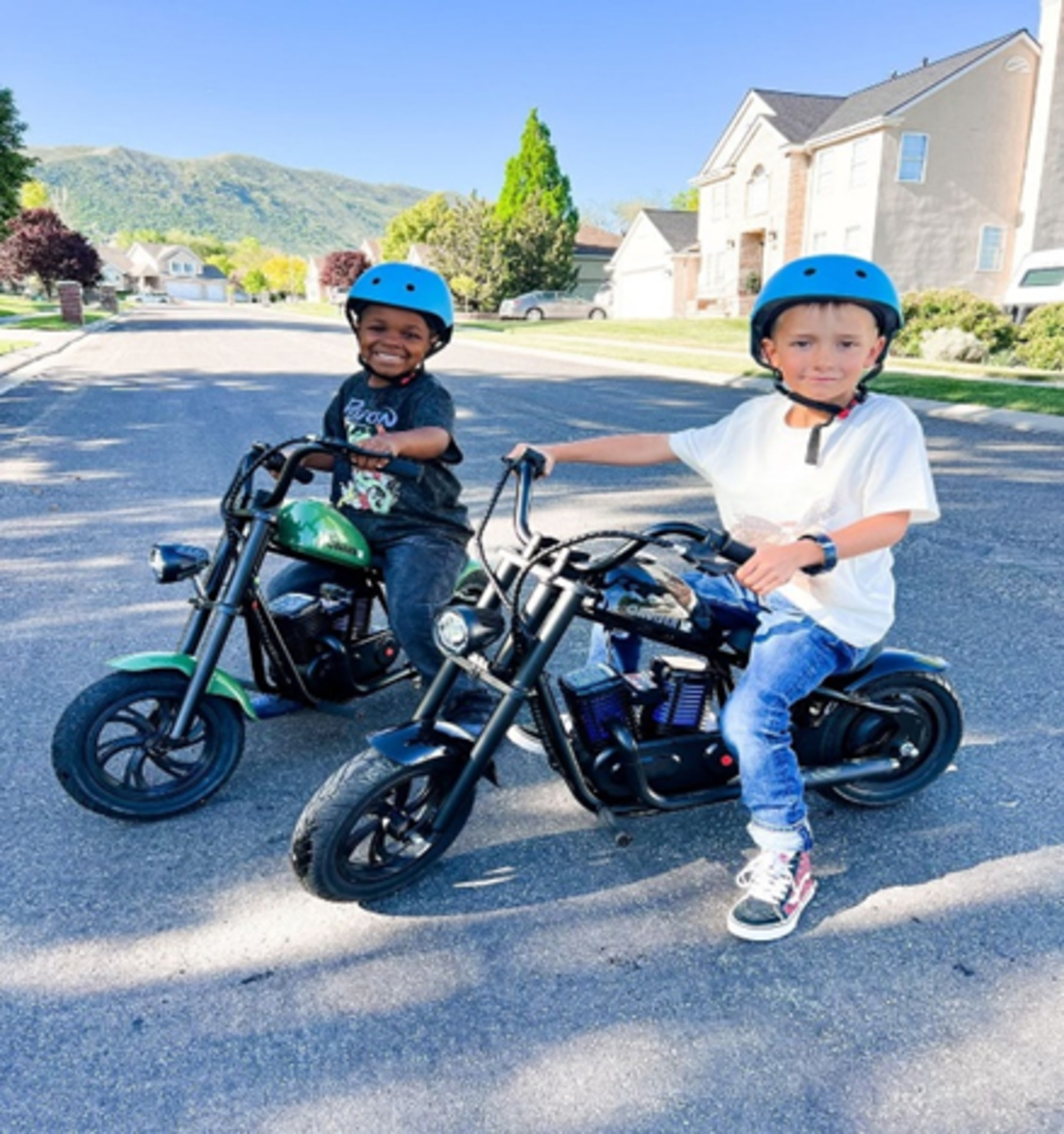Blog
The Ultimate Guide to Kids' Motorbikes: Choosing, Safety, and Maintenance
Remember back when you were a biking kid razing
through the streets? The wind in your hair, the thrill of speed, and the sense
of freedom are experiences that many of us cherish from our childhood. Today,
children can enjoy an even more exciting version of this experience with battery-operated
motorcycles. These kids' motorbikes have gained immense popularity and
offer a thrilling way for children to explore their surroundings. For parents
considering buying a motorbike for their child, this guide will provide
essential tips and advice to ensure a safe and enjoyable experience.
Choosing the Right Motorbike for Your Child
Importance
of Choosing the Right Bike
Selecting the right motorbike for your child is crucial for their safety and enjoyment. The too large or powerful of a bike may be hard to control and the too small one lack the benefit that they expect from biking. Therefore, it is essential to choose a bike that matches your child's age, size, and skill level.
Factors to Consider
When choosing a kids' motorbike, consider the following factors:
· Engine
Size: The engine size should correspond to your child's
experience and confidence level. For beginners, a smaller engine is preferable.
Weight:
The weight of the bike should be manageable for your child. Heavier bikes can
be harder to control and maneuver.
· Suspension: Good suspension is important for a smooth ride, especially if your child will be riding on uneven terrain.
Speed
Limitation: Many battery-operated motorcycles come
with adjustable speed settings, allowing parents to control the maximum speed.
·
Battery
Life: Confirm that the motorbike has a long battery life, so that your
little one can keep riding the bike for much longer and spend more time
enjoying themselves without having to frequently stop to recharge it. Look for
fast-charging models to reduce your downtime.
·
Durable:
Choose a bike that is constructed of sturdy material which can take hefty use
You know kids are hard on stuff...Investing in a bike that is durable is smart.
Types
of Bikes
There are several types
of motorbikes available for children, each suited to different needs and
preferences:
· Mini-Bikes:
These are small, lightweight bikes designed for younger children. They are
perfect for beginners and often come with training wheels.
· Off-Road
Bikes: These bikes are designed for rugged terrain and are
ideal for adventurous kids who enjoy riding on dirt paths and trails.
·
Scooters:
older kids love playing with electric scooters and it is an excellent option.
Simple to ride, and a smooth whisper-quiet lap on a flat pavement.
·
Cruiser
12 Plus: The Cruiser
12 Plus is a standout model in the world of kids' motorbikes.
Designed for children aged 12 and up, it features a robust battery-operated
engine, providing a longer ride time and higher speeds. With a sleek design and
comfortable seating, the Cruiser 12 Plus offers a mature riding experience for
older kids who are ready for a more advanced motorbike.
|
Figure 1: "Young rider enjoying a
smooth ride on the Cruiser 12 Plus, equipped with training wheels for
added safety." |
Safety
Tips for Kids' Motorbikes
·
Importance
of Safety
Safety is paramount when
it comes to kids
motorbikes. Ensuring your child understands and adheres to
safety guidelines can prevent accidents and injuries.
·
Helmets
Wearing
a helmet is non-negotiable. Helmets protect against head injuries in case of a
fall or collision. When choosing a helmet, ensure it fits snugly and is
certified by safety standards organizations.
·
Clothing
Proper
clothing is essential for protection. Children should wear long sleeves, pants,
and sturdy shoes. Additionally, protective gear such as gloves, knee pads, and
elbow pads can offer extra safety.
·
Supervision
Supervision is critical, especially for younger children. Always watch your child while they ride and be ready to intervene if necessary. Teach them the importance of riding in safe areas away from traffic and other hazards.
·
Practice
Before letting your child
ride freely, make sure they practice in a safe, controlled environment. Start
on a flat surface and gradually increase the difficulty as they become more
confident and skilled.
|
Figure 2: "Kids having fun on their battery-operated motorcycles, perfect for shared adventures and building friendships." |
Maintenance
and Safety Checks for Kids' Motorbikes
·
Importance
of Maintenance
Regular maintenance is
essential to keep the motorbike in good condition and ensure your child's
safety. A well-maintained bike is less likely to have mechanical failures that could
lead to accidents.
·
Scheduled
Maintenance
Create a maintenance
schedule and stick to it. Regularly
check and service the bike according to the manufacturer’s guidelines. This
includes checking the battery, tires, brakes, and other critical components.
Safety
Checks
Perform safety checks
before each ride:
·
Tires:
Check for proper inflation and any signs of wear or damage.
·
Brakes:
Ensure the brakes are functioning correctly and respond well.
·
Oil
Level: For gas-powered bikes, check the oil level regularly
to ensure smooth operation.
|
Figure 3:
"A happy rider on the Challenger 12 Plus, designed for stability and
style." |
Including
Your Youngster in Upkeep
Fostering in your child a
basic understanding of upkeep can teach them responsibility and care. Teach
them how to do basic maintenance like charging the battery, washing the bike,
and checking the tire pressure. Their increased appreciation of their
motorcycle and understanding of the value of maintenance may result from this
involvement.
Conclusion
In summary, choosing the
right motorbike for your child involves considering their age, size, and skill
level, as well as the bike’s engine size, weight, and suspension. Safety should
always be a priority, with appropriate helmets, clothing, supervision, and
practice. Regular maintenance and safety checks are crucial to ensure the bike
remains in good condition and safe to ride.





Comments